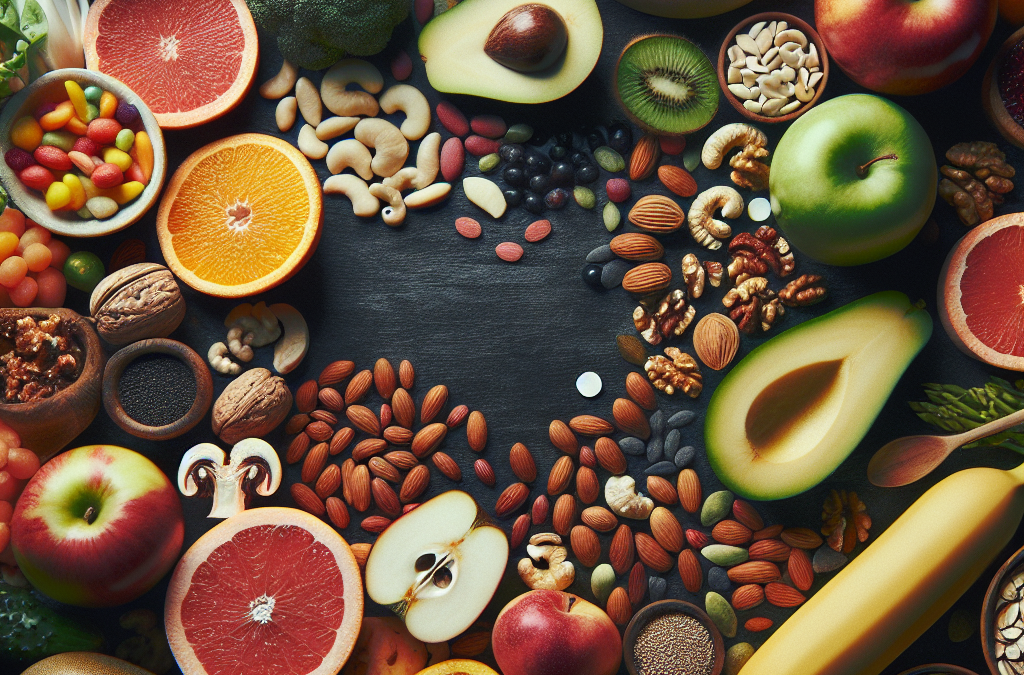Healthy cooking with whole foods has become a central focus for many of us looking to improve our well-being in 2025. Emphasizing fresh, minimally processed ingredients helps boost energy levels and supports overall health. By integrating whole foods into our daily meals, we can enjoy vibrant flavors while nourishing our bodies effectively.
As we navigate the year 2025, understanding how to incorporate healthy cooking with whole foods into our routines is more important than ever. This approach not only promotes better health, but it also encourages sustainability and mindfulness in our food choices. Let’s explore some simple and delicious tips to make this journey enjoyable and rewarding.
Embracing Whole Foods for Nutritional Benefits
Understanding Whole Foods
Whole foods are foods that are minimally processed, preserving their natural nutrients and flavors. examples include fresh fruits, vegetables, whole grains, nuts, and seeds. Incorporating these into your diet is fundamental for healthy cooking with whole foods.
By choosing whole foods over processed alternatives, you optimize your intake of vitamins, minerals, and fiber. This creates a strong foundation for maintaining energy, supporting digestion, and preventing chronic diseases. In 2025, more people are prioritizing whole foods for a healthier lifestyle.
Nutritional Advantages of Whole Foods
A diet rich in whole foods has been linked to increased longevity and improved mental well-being. Whole foods help stabilize blood sugar levels and reduce inflammation, which are key factors in overall health. Cooking with whole foods ensures you get the most nutritional value from each ingredient.
Another benefit is the natural antioxidants found in many whole foods, such as berries and leafy greens. These compounds help fight oxidative stress and support immune health. Embracing healthy cooking with whole foods makes it easier to reach your nutritional goals each day.
Transitioning to a Whole Foods-Based Diet
Transitioning can be simple if you start by replacing processed snacks with fresh alternatives. For example, swap chips for air-popped popcorn or raw veggie sticks. Gradually increasing whole foods in your meals can help it become a sustainable habit.
Planning meals in advance allows you to shop smarter and reduces temptations for processed foods. Focus on seasonal, local produce to maximize freshness and flavor. This way, healthy cooking with whole foods becomes a natural part of your lifestyle in 2025.
Overcoming Common Challenges
Many people find it challenging to incorporate more whole foods due to busy schedules or limited access. Planning quick recipes using staple ingredients like oats, beans, and frozen vegetables can help overcome these hurdles. Batch cooking and meal prepping are also effective strategies.
Education is key—understanding how to prepare and store whole foods properly ensures minimal waste and maximum nutrition. Connecting with local farmers’ markets or community-supported agriculture (CSA) programs can also make healthy cooking with whole foods more accessible and affordable.
Cooking Techniques to Enhance Flavor and Health
Steaming and Boiling
Steaming is a gentle cooking method that preserves nutrients in vegetables and fish, making it ideal for healthy cooking with whole foods. It retains the natural flavors and textures without adding extra fats or calories.
Boiling can be useful for preparing grains and legumes efficiently. Just be mindful not to overcook, as it can lead to nutrient loss. Using herbs and spices during cooking enhances flavors naturally, reducing the need for salt.
Roasting and Baking
Roasting vegetables caramelizes natural sugars, creating rich flavors without added oils. It is a simple way to boost the appeal of healthy cooking with whole foods for family meals.
Similarly, baking lean proteins like chicken or fish with herbs provides a flavorful, nutritious dish. Using parchment paper or silicone mats minimizes the need for added fats, aligning with health-focused cooking practices.
Sautéing and Stir-frying
Sautéing with small amounts of healthy oils, such as olive or avocado oil, adds flavor without excessive calories. It’s perfect for quick, delicious meals that retain the nutrients of fresh ingredients.
Stir-frying is a great technique to combine colorful vegetables, lean proteins, and whole grains in one dish. High heat cooking preserves vitamins and minerals while creating dynamic textures and flavors.
Raw and Minimalist Preparations
Eating some foods raw maximizes nutrient intake, especially in salads and smoothies. Using raw vegetables and fruits provides crunch and freshness, essential for healthy cooking with whole foods.
Huge Discount on the Best Certified Organic Whole Food Supplement!
Minimalist dishes like overnight oats or simple fruit bowls require little prep but offer maximum nutrition. This approach makes healthy eating accessible and quick, ideal for busy lifestyles in 2025.
Smart Shopping Tips for Whole Foods
Prioritize Seasonal and Local Produce
Buying seasonal and local produce ensures maximum freshness and flavor, essential for successful healthy cooking with whole foods. These items are often more affordable and environmentally friendly.
Visit farmers’ markets or join local CSAs to source high-quality ingredients directly from growers. Not only does this support local economies, but it also encourages a more sustainable diet.
Read Labels Carefully
When shopping for packaged whole foods, always read labels to avoid added sugars, preservatives, and artificial ingredients. Opt for products with minimal, recognizable ingredients.
This practice helps you stick to healthy cooking with whole foods by choosing products that retain their nutritional integrity. It’s an essential habit for maintaining a clean and whole-food-based diet.
Plan Your Meals
Planning meals before shopping reduces impulse buys and ensures you purchase all necessary ingredients. This saves money and cuts down on food waste.
Creating a weekly menu focused on whole foods allows you to balance nutrients and explore new recipes. In 2025, digital tools and apps make this process easier than ever.
Buy in Bulk
Bulk purchasing grains, nuts, and seeds not only saves money but also reduces packaging waste. These staples are versatile and key for healthy cooking with whole foods.
Invest in airtight containers to keep your bulk items fresh and organized. This habit ensures you always have wholesome ingredients on hand for nutritious meals.
Frequently Asked Questions
What are the easiest ways to start healthy cooking with whole foods?
Begin by incorporating more fresh fruits and vegetables into your daily meals. Simple recipes like salads, smoothies, or roasted veggies are great starting points. Gradually replace processed snacks with whole food alternatives to build sustainable habits.
How can I make healthy cooking with whole foods more affordable?
Buying in season, shopping at local farmers’ markets, and planning meals ahead of time can significantly cut costs. Purchasing staple items like grains and legumes in bulk also reduces expenses while keeping your pantry stocked.
Are there any specific tools that help with healthy cooking with whole foods?
Basic tools like a good chef’s knife, cutting boards, a steamer, and a slow cooker or Instant Pot can facilitate meal preparation. These tools make cooking healthy meals more efficient and enjoyable, especially in busy lifestyles.
What are some common mistakes to avoid when practicing healthy cooking with whole foods?
Avoid overcooking vegetables, which can lead to nutrient loss. Also, be cautious of relying too heavily on processed ingredients labeled as “healthy.” Always prioritize whole, minimally processed foods for optimal health benefits.
In 2025, embracing healthy cooking with whole foods is more accessible and essential than ever. This approach not only enhances your nutrition and flavor experiences but also promotes a more sustainable and mindful lifestyle. By making small, consistent changes, you can enjoy delicious, wholesome meals every day and improve your overall well-being.
Huge Discount on the Best Certified Organic Whole Food Supplement!
Find out more information about “healthy cooking with whole foods”
Search for more resources and information:




